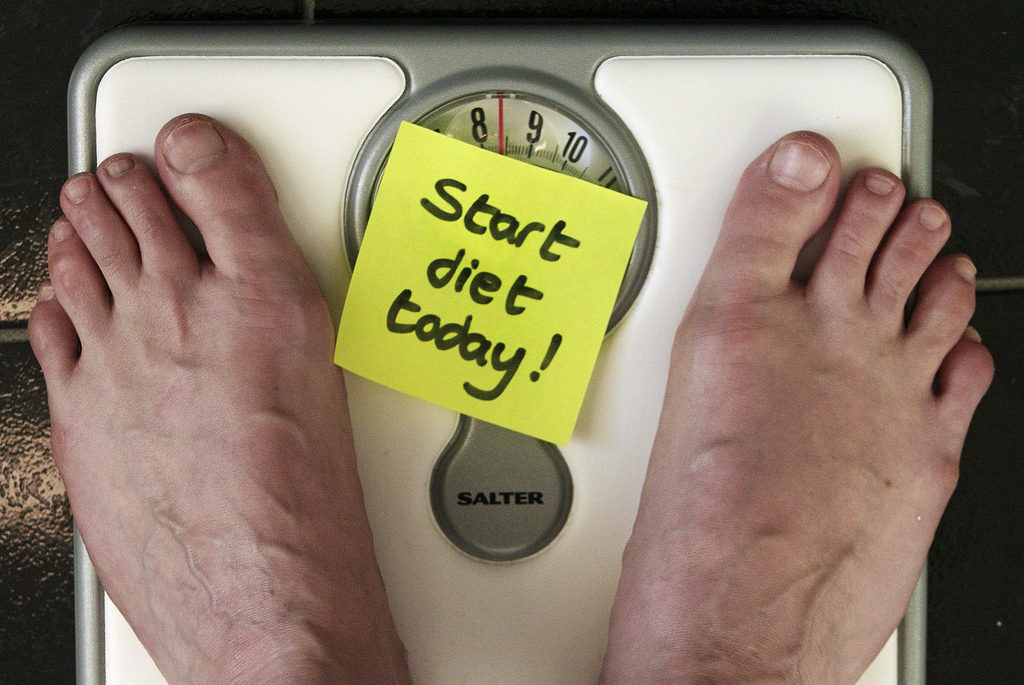
These days, searching for the best diet plan has become an obsession. But it is a healthy (pun intended) obsession. After all, being conscious of your food intake is wise. However, to derive the maximum benefits from a diet, it’s recommended to pick one that meets your goals and also suits your palette to an extent.
After all, you’re more likely to stick to it if you know it’s giving the desired output and you like what you’re eating. Here we go beyond mere calorie counting and give you the nitty-gritties of 10 new diet plans breaking the internet today:
1. Ornish Diet – Eat, Exercise, & Meditate
According to Wikipedia, the Ornish diet has been created by Dean Ornish, a physician, and researcher, in an effort to promote a healthy lifestyle. It is a vegetarian diet that emphasizes consuming whole foods, some examples of which are beans, legumes, fruits, grains, and vegetables.
Of course, this is a highly restrictive diet for meat and even dairy lovers, to an extent. Apart from both red and white meat, it also proscribes high-fat foods such as oils, avocados, nuts, seeds, high-fat dairy, and sugar.
It, however, allows consumption of non-fat and low-fat dairy products such as milk, cheese, and yogurt, in moderate amounts. Although the diet is primarily plant-based, Ornish recommended fish oil supplements.
The unique aspect of this diet plan is that it focuses on diet and stress management. It has a comprehensive approach to achieving overall health by combining diet with exercise, yoga, meditation, and also psychosocial support. Furthermore, it encourages lifestyle changes such as avoiding or limiting tobacco and alcohol use. It is the right fit for people who wish to keep heart disease at bay by making lifestyle changes. Most importantly, it helps promote physical and mental well being.
2. Flexitarian Diet – Eat Your Vegetables For A Better Planet
If the Ornish diet is too restrictive for you, you may consider the Flexitarian diet. As the name suggests, it allows a flexible approach to eating. While it is recommended eating mostly plant-based foods, it allows the consumption of meat and dairy products in moderation.
It is based on an inclusive’ food plan: it emphasizes adding more food items than eliminating them. Since this is more realistic than some of the other plans, it is less likely to compel cheating’ on your diet. It is also more likely to be followed by dieters over the long-term.
It advocates regular intake of vegetarian sources of protein such as beans, nuts, peas, seeds, and lentils, and good quality fats. The bbcgoodfood website advises that this diet in combination with physical exercise aligns with the suggestions to reduce the risk of breast and prostate cancer.
It is unique in that it aims to reduce the carbon footprint by promoting intake of plant-based foods for the most part. If you wish to combine healthy eating with social responsibility, especially in terms of planet conservation, this can be the diet for you.
3. Calorie-In-Calorie Out (CICO) – Do the Math
The Calorie-in Calorie-out diet works on the simple premise that we need to burn more calories than we consume, to lose weight. This is an effective method to lose weight if that is the goal. And although keeping count of your calories sounds tedious, it is not so because there is a plethora of apps that help you keep track of calories burned as well as consumed. The main drawback of this diet plan, however, is that it may compromise on the overall health and nutritional aspect if one is not careful with one’s food choices. For instance, a calorie in an apple majorly differs from a calorie in, say a candy, as the former is highly nutritious.
The whole exercise of counting calories diverts attention from the nutritional value of a food. For instance, two people who consume the same number of calories from different foods may experience different health consequences. This is because it is possible to meet the daily calorie intake through eating unhealthy foods simply by restricting the daily calorie quota.
It would be wise to use this diet plan in combination with mindful eating. If one is able to accomplish this, it is a fundamental approach to losing weight.
4. Mediterranean Diet – Wholesome, Flavorful, & Healthy
If nutrition, overall good health and longevity are your goals, then the Mediterranean diet is a perfect fit. The best part of this diet is that it includes foods from all groups: plant-based fruit and vegetables, carbohydrates (whole grains) as well as protein (fish), and healthy fats such as olive oil and nuts. So it is the least restrictive diet, apart from the Flexitarian diet. And the wholesome ingredients keep you full longer, which is why most people do not switch to any other diet once they have been on this one.
People from the Mediterranean region are also known to include flavorful ingredients such as, olive oil and herbs, making their meals tasty. This in part probably explains how the diet promotes a happier state of mind.
The people from this region keep the consumption of red meat to a minimum. On the other hand, fish is a staple of all meals. Fatty fish is rich in Omega-3 fatty acids, are known to lower the risk of sudden heart attack.
Furthermore, the people from the Mediterranean region drink red wine moderately. The Mayo Clinic states that research studies have shown that red wine keeps heart disease at bay. The clinic further recommends drinking up to 5 ounces of red wine for women and no more than 10 ounces for men less than 65 years of age.
5. Weight-Watchers’ (W.W) Diet – Indulge, Watch, and Lose
People who prefer to indulge while they are on a diet would love this plan. The WW diet, as it is now called, allows subscribers to eat foods that they enjoy. However, it tries to regulate the quota of unhealthy foods by using a point system that is unique to the WW plan. The system attributes a point’ to different foods such, as a bowl of pasta, chicken breast, sandwich, and a scoop of ice-cream and so on. It also prescribes a daily permissible number of points to be consumed, based on one’s goal.
The daily quota is calculated, based on many factors, such as weight, height, and goal, among others. By restricting the points’ quota, it attempts to encourage healthier food choices (for ex. Point 0 foods).
For instance, dessert-lovers may have a piece of cake for lunch, but then would be required to have a light supper, to compensate for the indulgence. This flexible approach helps dieters to satisfy their cravings without feeling guilty, while the point system ensures that they are back on track during their next meal.
One can sign up for WW meals on their website. Some WW processed foods such as ice-cream bars, crackers, and cakes, among other things, are also available at retail outlets such as Wal-Mart.
6. Nutritarian Diet – Nutrition Is The Focus
As the name suggests, the Nutritarian Diet focuses on the nutritional qualities of foods rather than the fat content. The underlying principle is that eating a nutrient-rich diet enhances your body’s ability to heal, slow down the aging process, prevent diseases, and maintain your ideal body weight.
It recommends a high intake of micronutrients over macronutrients. Micronutrient foods encompass vitamins, minerals, and phytochemicals, all of which are found abundantly in natural plant-based foods. Macronutrients, on the other hand, include proteins, carbohydrates, and fats, which are mostly consumed in a high amount, anyway.
Hence, it advocates the consumption of whole grains, whole fruits, vegetables, legumes, and beans. The foods that are to be avoided are dairy products, soda, salt, and sugar. Quite naturally, caffeinated tea and coffee that are known to wash away’ nutrients, are also to be avoided.
The diet also stresses the importance of stopping eating before you are full. It also discourages eating between meals. This is a good diet plan if one wants to slow down aging and avoid diseases by promoting the body’s natural capacity to stay and remain healthy.
7. Ketogenic Diet – Eat Fats to Burn Fats
If you love the idea of consuming fried eggs and cheese for breakfast, you’ll absolutely fall in love with the Ketogenic diet. But, of course, you cannot have your bread with that! The diet endorses high intake of fats, proteins in moderation, and low or no carbohydrates. The working principle of this diet is that consuming a high proportion of fat in combination with proteins while limiting one’s intake of carbohydrates, encourages the body to burn fat for fuel.
This almost sounds like a dream: melt your body fat while you consume more fats. This is a great diet plan for people who wish to see visible changes in terms of losing inches’ of body fat. Similarly, the CSN Diet success stories have shown incredible fat loss results too. Going back to Keto diets, according to Healthline, these have also been shown to help in cases of epilepsy, type 2 diabetes, and other chronic conditions. However, it warns that limiting or restricting carbohydrate consumption could lead to some side-effects in the beginning. Some of these side-effects may include flu, headache, fatigue, poor sleep, and nausea, among others.
Furthermore, critics of this diet, advice that eliminating carbohydrates can be harmful in the long run. Lastly, if you cannot survive without good carbohydrates such as whole grains and foods, then you may wish to skip this plan altogether.
8. Primal Blueprint Diet – Back to Basics
As the name suggests, the general thumb rule of this diet is that we need to eat like our primal ancestors. The diet primarily endorses eating plenty of proteins, fats, and vegetables. In short, eat anything and everything that our primitive ancestors had access to fresh fruits, vegetables, nuts, seeds, raw or fermented dairy like milk and cheese, raw honey, meat, fish, and poultry. And strike out all foods that they didn’t have access to, such as, all processed foods, processed meat, and even grains. It does, however, allow the use of some grains that fall under the complex carbohydrate category, such as, wild rice and quinoa.
Although this sounds similar to the well-known Paleo diet, there are differences. The primal diet allows consumption of raw and full-fat dairy, nightshade vegetables, and coffee. Paleo, on the other hand, doesn’t allow the consumption of these food items.
This is an ideal diet for you if you believe in clean eating as it advocates organic fruits, vegetables, and eggs. Additionally, only grass-fed meat that is antibiotic and hormone free is permissible in this diet.
9. Middle-Eastern Diet – Close Cousin Of Another Favorite Diet
Like its close cousin – the Mediterranean diet – the Middle-Eastern diet is also rich in healthy fats, such as olive oil and nuts, fresh fish, vegetables, fruits, whole grains, and legumes. There are some minor differences though. For instance, the Middle-Eastern diet packs in an extra dash of flavor in the form of well-known Middle Eastern dips.
So what does a Middle Eastern diet mainly comprise? It includes, but is not limited to: fresh, leafy green salads topped with tuna or nuts, olive oil or vinegar dressing, wheat roll, falafel sandwich on pita, with cucumber, beets, lettuce, tomatoes and of course the flavorful thin sauce and hummus.
Another subtle difference between these two closely related diets is that middle-eastern food is always served in small plates, which is said to restrict portion size, while also encouraging one to try on new and a variety of different foods in one meal.
10. DASH Diet – Dietary Approach to Stop Hypertension
If you’re looking for a diet that is backed by experts, look no further. The DASH diet has been created by experts at the National Institute of Health with a view to reducing incidences of heart disease, lowering blood pressure, and reversing diabetes. According to Healthline, it also reduces the risks of cancer and metabolic syndrome.
It recommends food items along with the prescribed portions: 6-8 servings of whole grains, 4-5 servings of fresh fruits and vegetables each, and 6 or fewer servings of lean meat, chicken, and fish. Moreover, the diet suggests consuming 4-5 servings of nuts, seeds, and legumes per week. Furthermore, it permits the consumption of 2-3 servings of low-fat dairy products such as milk, cheese, and yogurt. Additionally, it recommends 2-3 servings of vegetable oils such as canola safflower, olive, or corn. Light salad dressing or low-fat mayonnaise in small amounts may also be used in this diet.
On the other hand, food items to be avoided on this diet are natural ones that are associated with high risk of heart disease and bad cholesterol, for example, red meat, salt, fat, and added sugar. This is an ideal diet if your goal is to avoid or control lifestyle diseases such as diabetes and hypertension.
All in all, it is best to consider all the aspects of a diet along with your body constitution, lifestyle, palette, and most importantly, your goal, before selecting the right one. Lastly, no diet works unless it is accompanied by physical activity. No matter which diet one chooses, it is imperative to follow it over a period of a few months before one can see the results. Remember health is a lifelong investment!








